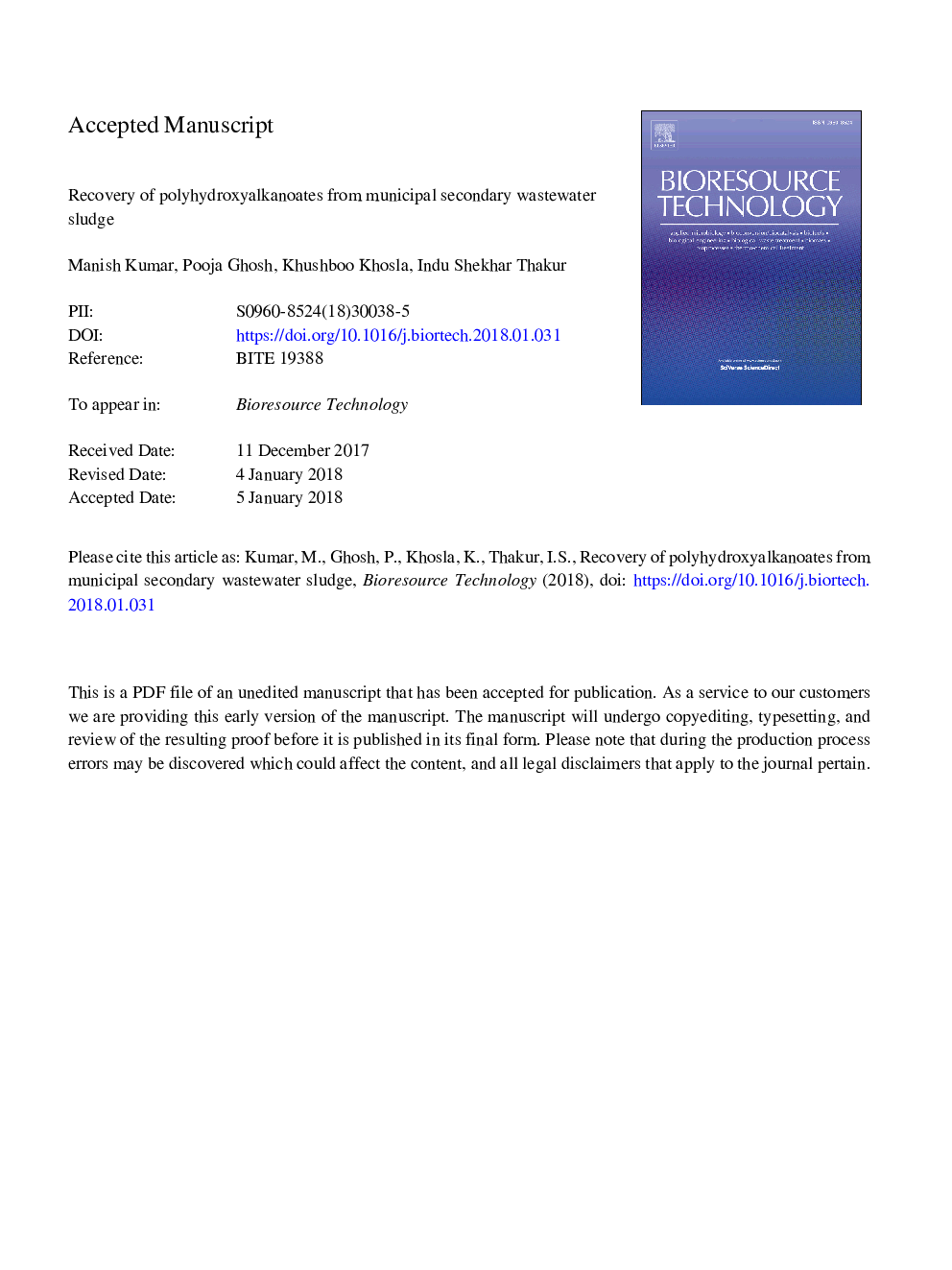| Article ID | Journal | Published Year | Pages | File Type |
|---|---|---|---|---|
| 7067994 | Bioresource Technology | 2018 | 18 Pages |
Abstract
In the current study, the feasibility of utilizing municipal secondary wastewater sludge for Polyhydroxyalkanoate (PHA) extraction was improved by optimization of various parameters (temperature, duration and concentration of sludge solids). Optimized process parameters resulted in PHA recovery of 0.605â¯g, significantly higher than un-optimized conditions. The characterization of PHA was carried out by GC-MS, FT-IR and NMR (1H and 13C) spectroscopy. The PHA profile was found to be dominated by mcl PHA (58%) along with other diverse PHA. The results of the present study show rich diversity of PHA extracted from a raw material which is readily available at minimal cost. In conclusion, exploring the potential of wastes for production of bioplastics not only reduces the cost of bioplastic production, but also provides a sustainable means for waste management.
Keywords
Related Topics
Physical Sciences and Engineering
Chemical Engineering
Process Chemistry and Technology
Authors
Manish Kumar, Pooja Ghosh, Khushboo Khosla, Indu Shekhar Thakur,
